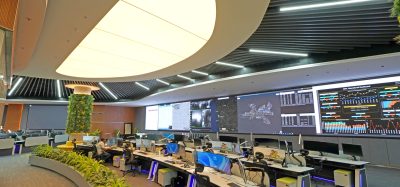How biometrics is driving innovation in airports despite legislative restrictions
Posted: 13 September 2024 | Ján Lunter | No comments yet
Biometric technology is undoubtedly transforming airport operations, offering heightened security and passenger convenience. Ján Lunter, CEO of Innovatrics, explores in detail how biometrics, from facial recognition to fingerprint scans, can jump through regulatory hoops to deliver more comprehensive security in airports.


In the world of airport security and passenger facilitation, biometric technology has become a game changer, reshaping the landscape of U.S. airports. Beyond the conventional methods of identity verification, biometrics, with its multi‑faceted applications, promises not only heightened security but also unparalleled operational efficiency and passenger convenience.
A recent report from Amadeus highlights the widespread adoption of biometrics by airlines, airports, corporate travel managers and hotels, which has led to a 14% increase in technology investment for 2024. The air travel industry is clearly now prioritising machine learning, data analytics, facial recognition and digital payments.
Additionally, a staggering 98% of airlines have either implemented or are planning to implement biometric systems at their airport terminals. Furthermore, 60% of airlines are poised to incorporate biometrics into essential passenger touchpoints such as check-in, bag-drop, lounge access and boarding within the next five years.
However, this concerted effort to achieve a seamlessly integrated biometric airport experience has not gone without its own controversies and concerns. The Federal Trade Commission has warned that consumers face risks associated with the collection of data, which led to the Traveler Privacy Protection Act aimed at prohibiting the use of facial recognition technology in airports.
Let’s examine why misconceptions about biometrics are misplaced and how it can be used safely in airports.
More than just facial recognition
Contrary to popular perceptions, biometrics extends far beyond just facial recognition. While facial recognition plays a pivotal role, airports increasingly adopt a multi-modal approach to biometric identification. This approach integrates different biometric measures to bolster security infrastructure and enhance identity verification processes. Incorporating a variety of methods, such as fingerprint and iris scans alongside facial recognition, can mitigate the risk of identity fraud and improve the accuracy of security screenings.
The goal should be to deploy biometrics, including facial recognition, responsibly. Photo storage should be limited, akin to CCTV recordings, with passenger checkpoint records maintained similarly to traditional biometrics-less checks. All of this can be established with transparent processes and benchmarks for facial recognition systems. For instance, setting thresholds for racial bias ensures fairness. The U.S. National Institute of Standards and Technology (NIST) provides accessible, independent benchmarks that should be followed diligently.
Effective for responsible widespread surveillance
While security controls are expected at airports, transparency regarding the real-time use of biometrics, akin to warnings about CCTV cameras, is crucial. Effective regulation should limit its deployment to spaces where its benefits outweigh human rights concerns, such as border crossings and airports. But given its unparalleled safety capabilities at scale, there’s currently no alternative technology that can match biometrics in airport security.
The principles of democracy demand the use of mechanisms to establish fair and minimally intrusive frameworks for deploying real-time biometric systems for public security. Even stringent legislation, such as the recent AI Act in the EU, allows for deploying such systems in specific publicly accessible areas, including airports and border controls.
With the rise of generative AI posing new challenges, airports must stay ahead of the curve by leveraging advanced biometric technologies. Continuous innovation enables airports to adapt and respond to emerging security challenges effectively. By harnessing the power of biometric modalities and deploying cutting-edge algorithms, airports can enhance security resilience and maintain the reliability of their security infrastructure.
The technology outweighs the risk of misuse
Not only is face-based biometrics considerably more accurate than any person who verifies the ID of the travellers, but it is also much faster, less obtrusive, more efficient, and freer of bias than humans. Proper safeguards around storing facial data make it a perfectly safe technology.
As long as there is a multi-modal approach that accompanies various techniques to ensure no errors, then the benefits outweigh the risks. Fingerprint identification, traditionally used for cross-checking identities, is a robust solution resistant to forgery and theft. Additionally, iris recognition provides unparalleled accuracy with 200 points of comparison intricately woven within the patterns of your eyes, further enhancing the reliability of biometric systems.
When you consider that mistakes might occur, for example, numerous scanners may struggle to accurately detect distinct features in older people, leading to a natural decline in verification success. Or that complex attacks have become so accurate, allowing attackers to bypass these systems using silicone masks and other ways of spoofing. A comprehensive approach that considers the result of various identification techniques is vital to ensure that biometrics is utilised correctly.
The barriers created by the new regulations
The Traveler Privacy Protection Act, introduced in the U.S. recently, undoubtedly presents a significant hurdle to the widespread adoption of biometrics technology in airport security. By imposing restrictions and complicating procedures, the Act impedes the realisation of the benefits that biometrics offer. While the Act does not directly impact fingerprint recognition, it introduces complexities that hinder operational efficiency. Fingerprint checks require specialised hardware and trained personnel, rendering them less conducive to automation compared to facial recognition e-gates.
Airports are perceived as high-security zones, where stringent security measures are expected by passengers and authorities alike. Facial recognition, specifically tailored for such environments, offers a level of security unmatched by alternative methods. It is a real shame that abandoning facial recognition technology would curtail both security enhancements and convenience improvements on the horizon. Facial recognition also facilitates background checks for individuals without fingerprint data and serves as a pivotal link in remote processing, enabling seamless experiences from automated baggage drops to lounge access.
Given the U.S.’s position as a leader in global air travel, foregoing the potential gains from biometrics would be detrimental. As airports worldwide embrace facial recognition as the ‘all‑access pass’ for myriad services, the U.S. risks falling behind in delivering optimal passenger experiences and maintaining robust security protocols.
It’s undeniable that the integration of biometric technology represents a massive milestone in the evolution of airport operations. With its promises of heightened security, efficiency, and convenience, biometrics offers a great solution to the mountain of challenges facing the aviation industry. If airports can adopt a multi-modal approach, fostering innovation and navigating regulatory considerations, they will be able to harness the full potential of biometric technology, ultimately driving growth, innovation, and passenger-centricity.


Credit: Innovatrics.
Ján Lunter graduated from the Télécom Paris Tech University in France. He is the Co-founder and CEO of Innovatrics, which has been developing and providing fingerprint recognition solutions since 2004. Jan is an author of the algorithm for fingerprint analysis and recognition, which regularly ranks among the top in prestigious comparison tests (NIST PFT II, NIST Minex). In recent years, he has also dealt with image processing and the use of neural networks for face recognition.
Are you ready to meet the expectations of Gen Z travellers? Join our virtual panel to discover how airports can engage the next generation of passengers.
16 Oct 2025 | 14:00 PM BST | FREE Virtual Panel Discussion
Join us for this interactive session where industry leaders will explore how airports are adapting to the needs and values of Gen Z, the first truly digital-native, socially conscious, and tech-savvy generation.
What You’ll Learn:
- What drives Gen Z travel decisions, and how to respond
- How to harness digital tools, social media, and mobile-first strategies
- How sustainability, inclusivity, and personalised experiences shape Gen Z’s airport expectations
- Real-world examples from leading airports that are successfully engaging younger travellers
Don’t miss your chance to learn from the airports leading this change – Register Now – It’s Free!
Related topics
Artificial intelligence (AI), Biometrics, Contactless / Touchless technology, Data, Digital transformation, Innovation, New technologies, Passenger experience and seamless travel, Regulation and Legislation, Security


















